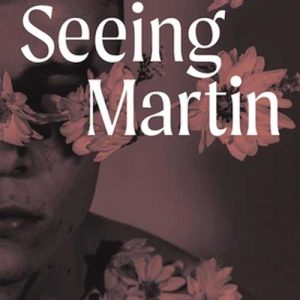
by Su Croll Pedlar Press 2020/$20.00/288 pp
Su Croll is the author of three books of poetry. Seeing Martin is her first novel, but her elegiac, nuanced, beautifully descriptive writing could easily be her fourth book of poetry. Seeing Martin is seen partly through the eyes of Mira, an art student, who after the recent death of her father begins a tumultuous relationship with Martin as both lover and obsessive subject for her art. Conversely, we see Martin through the fanatical eyes of his older sister, Marie Claire Zorn, a celebrated photographer (think Diane Arbus). The sister’s narrative is revealed through her notebooks, which document Martin’s photographic images from his childhood to troubled adulthood accompanied by critical reviews of Marie Claire’s shows written by various arts journalists. This stylistic technique gives the novel another layer, a depth that feels part fiction, part documentation. I was initially confused when I read the first notebook and accompanying critical review because the narrator remains a mystery until further along when we see that she is in fact Martin’s sister. That’s when the unorthodox narrative comes together and shimmers.
Marie Claire’s instinctive portrayals of Martin and other male subjects are succinct, enigmatic and, as the novel plays out, devastating. This power emerges over time. Seeing Martin is a complex and immersive novel about art and relationship—Martin as viewed through the female lens, the mania of his photographer sister, Martin fractured and parcelled out (like meat in a Francis Bacon painting, Mira imagines), coupled with the sexually charged relationship Martin shares with Mira. We peer into his history and character—Martin seeking solace from his sister’s obsession with him, her fame, his infamy, his wealthy family, his failed career attempts. Prior to Mira, Martin flounders in transitory relationships, destructively pursuing bar fights, which his sister documents afterward—his stitched face, bruised eyes and other wounds.
Through Mira we really begin to see Martin, and through Martin, Mira begins to see herself. Mira’s own fractured story is of a deceased father and an estranged mother who left her in her abusive father’s care when she was 12. This abuse Mira can’t or won’t see until she realizes after her father’s deathbed apologies that she can’t forgive him if she can’t acknowledge the abuse that likewise forced her mother out. Mira pours her anguish into her art—and into Martin. Meanwhile, as the story of Marie Claire unfolds, we realize the subtle connections in her seemingly random notebook entries about her precarious male subjects. Seen as a whole, in Seeing Martin, Su Croll paints what feels like a master work of art.
—Lee Kvern is the author of three books of fiction.

